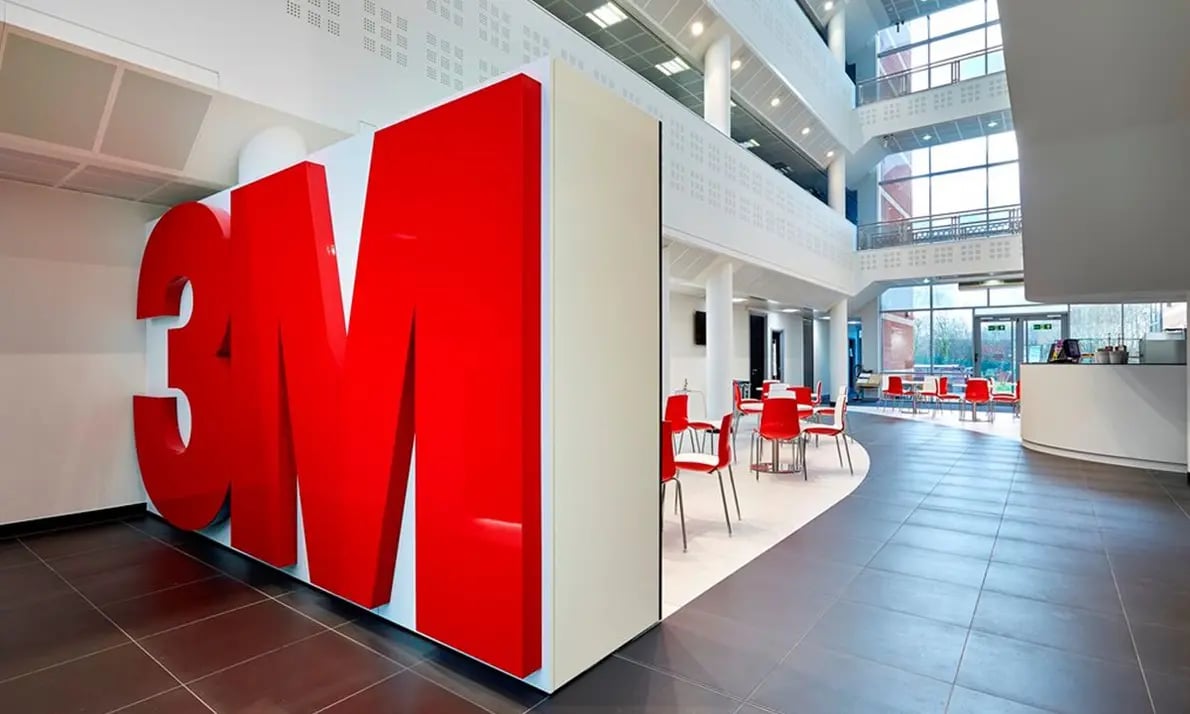It’s easy to overlook the importance of effective implementation when it comes to innovation.
However, the ability to turn an idea into successful implementation can make all the difference to a company’s competitive edge. As history shows, it’s the reason why some businesses survive and others don’t.
In this article, we’ll look at how you can build a workplace culture that supports creativity, and will outline the key steps needed to successfully implement new innovations.
You’ve got an amazing idea - now what?
Somewhere in your company, someone is about to have an amazing idea.
It could be a way to save big on production costs, or to convert existing customers to repeat purchasers. It could be a way to take a bite out of the competition with the release of a market-changing service, or to boost product visibility with a unique advertising campaign.
Now, ask yourself: What happens once that excellent idea enters this person’s head?

Will that genius thinker have the systems and tools in place to put the idea into action? Will they be able to draw from others around them to turn this idea into a killer pitch and get the wheels turning on a proof of concept?
If you answered yes to all these questions, you can probably stop reading here.
If not, there may be barriers preventing your people from turning their great ideas into valuable innovations.
This is why implementation is so crucial. Beyond generating amazing ideas, you need systems in place to develop and test them, get decision-makers on board, and get pilots up and running.
To successfully implement ideas for innovative products and services, you first need to build a culture of innovation in every layer of your company.
Building a culture of workplace innovation
To be truly innovative, your company needs to invest in organizational capability, workplace culture, and employee capacity for creative thought.
As Robert F. Brands, President and CEO of Variblending, says: “The climate for innovation can only thrive when every aspect of the organization promotes creativity, engagement and acceptance of the change required.”
Unfortunately, a lot of innovations fail not because of weak thinking or incomplete problem definitions, but because companies lack the workplace culture needed to grow valuable ideas. Instead, people cling to the status quo, missing out on valuable opportunities to innovate.
Conversely, the most innovative companies spend significant time and effort building the creative capability of their people before anything else. This helps ensure valuable ideas are examined for their true potential, and aren’t met with resistance or negativity.

Online travel company Kayak is an excellent example here. The company puts a lot of effort into building and maintaining a workplace culture that is non-hierarchical, collaborative, and inspiring, and where ideas can flourish.
This dynamic and positive workplace culture helps Kayak employees to develop promising ideas, and to nurture these ideas into essential innovations. It also reinforces the expectation that every one of Kayak’s employees should be innovators.
Building a culture of workplace innovation takes time, effort, and a commitment to:
- Collaborate across teams and divisions
- Encourage the search for accidental innovation
- Look for innovative solutions in non-obvious areas
- Encourage proactive, solutions-based thinking
- Tolerate the occasional failure on the way to successful innovation
And remember, building an innovation culture is a separate task from developing your overall corporate strategy. These two tasks should exist independently, so that no matter what happens with a company’s corporate strategy, your culture of innovation will survive.
A supportive workplace culture can support each step in the innovation implementation process.
Innovation lifecycle: The seven steps of implementation
Taking an innovation from the first spark through to a finished product involves seven steps:
- Strategic direction
- Inspiration
- Ideation
- Proof of concept
- Pilot
- Roll out & production
- Measurement & feedback
Now, we’ll look at how workplace culture supports each step of this innovation lifecycle.
1. Strategic direction
Before any of your employees can turn their ideas into viable proposals, they need to understand the strategic direction of the company. This should be the first step.
Not only does an innovation strategy help guide a company’s creative efforts - it also provides helpful limitations for innovative thinking. Having an innovation strategy is also a key part of promoting a creative and enabling workplace culture.

Innovation leader Tesla is a great example. Tesla employees work in line with the company’s strategic goal of transitioning the world from combustion to electric technology. This awareness helps to drive (pun intended) the company’s culture of cutting-edge innovation.
2. Inspiration
With the company’s strategic direction in place, the next step is for those within the company to find inspiration for innovative services and solutions.
Inspiration can come at any time, and to anyone within the business. Having a supportive workplace culture helps with inspiration in many ways, including through encouraging information sharing and the cross-pollination of ideas.
For an example of this innovation in action, check out DHL’s Innovation Workshops, where DHL employees from all over the world come together with clients to share information and ideas.
3. Ideation
Blackboard, whiteboard, post-it notes, stone tablets - however you dream up your best ideas, you need to do what you can to capture them, nurture them, and flesh them out.
For your people to do their best creative work, they need two things: the right tools (including ideation software), and time and space to think.

A workplace culture of innovation can make all the difference to the ideation process for company employees. For a couple of great examples of innovative culture in action, look at 3M’s 15% time philosophy, or Google’s 20% approach.
4. Proof of concept
Once you’ve got a great idea, you need to turn it into a proof of concept - an exercise to test a design idea or assumption, and prove its viability.
This is where you need to get the right people involved. For example, testing a new product design may require input from those people sourcing materials, overseeing production lines, marketing, and engineering.
Having a collaborative workplace culture makes this process a lot easier. If employees are actively encouraged to contribute to proofs of concept, the resulting innovations will benefit from a wider range of expertise and input.

A positive workplace culture also helps innovators to overcome the resistance that can result from challenges to the status quo.
5. Pilot
If your proof of concept is approved, you’ll then be able to move to the pilot stage. Here, you’re testing the idea in practice, but with a limited run.
As with every stage of the implementation process, it’s crucial to collect and analyze information at the pilot stage in order to inform future innovation. An innovative workplace culture can help facilitate this, as employees are more likely to learn from past mistakes.
6. Rollout & production
If your pilot proves successful, management and leadership may approve it for rollout and production. As with all other steps in the process, a workplace culture that embraces innovation can help speed up this process.
This step doesn’t just involve a question of scaling - it may also involve transforming core company skills and capabilities to cater for this new product or service.

For a high-profile example of this kind of transformation, we can look at Facebook’s investments in developing its capabilities as a marketing and advertising platform. In large part, this transformation succeeded because of Facebook’s strong culture of innovation.
7. Measurement & feedback
Finally, every step of the innovation process should be evaluated and analyzed, with the key lessons communicated to employees in clear terms. This helps to optimize the implementation process for the future.
By building an innovative company culture, this process of measurement and feedback becomes a lot easier for staff. Rather than glossing over the tougher discussions, innovators are encouraged to have frank discussions about past shortfalls and avoid these in the future.
Innovation implementation: The devil is in the detail
In innovation, sometimes the smallest details can matter more than the largest ideas.
You can have a concept that promises to change markets for good. However, if your workplace culture doesn’t help implement new innovations through each of the seven steps above, your great idea will never go anywhere.
Unfortunately, that’s exactly what happened with Kodak. Steve Sasson, a Kodak engineer, invented the first digital camera back in 1975, but management failed to see the potential of this amazing technology as a market disruptor. Instead, they got stuck defending the status quo.

Stories like Kodak’s are why it’s so important for companies to take time to develop a culture of workplace innovation, and to regularly audit the idea implementation process. Doing so helps identify barriers to company innovation and improve product development and customer focus.
Even more important, the systems and procedures companies have in place to support innovations must be constantly tested and assessed to ensure they reflect evolutions in innovation strategy. This helps these systems stay fit for purpose.
Conclusion: Implementation is everything
Creating systems and processes to grow new ideas might not sound as exciting as developing an innovation strategy or investment portfolio, but it’s one of the most crucial steps in the innovation process. Without these processes, innovation implementation is impossible.
A collaborative and creative workplace culture helps facilitate each of the seven steps in innovation implementation. Even more importantly, this positive culture allows companies to celebrate successful innovations while still learning from their failures.
Building a culture of creativity and innovation takes time, patience, and significant resources - especially when the status quo is agnostic - or even hostile - to new innovations.
However, from the long list of failed companies out there, the evidence is clear: if you want to thrive by implementing great innovations, you need a strong supportive culture within your company.




